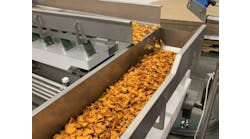Q. How do you properly clean a slicer?
A. To properly clean a slicer you must disassemble the slicer and clean the subassemblies and then reassemble the unit. When performing this task, it is important to monitor these subassemblies for cracks and broken or missing parts and repair them as needed. You also need to routinely examine the condition of seals and gaskets to confirm the integrity of these areas. If problem areas are discovered you need to contact the manufacturer’s authorized service representative for options regarding appropriate repair solutions.
Recently in an effort to respond to the outbreak of serious consumer illness with regard to retail, or deli, sliced meat and cheese products, the FDA has recommended that food retail slicers be cleaned and sanitized every four hours. This request is not to have the slicer simply wiped down but to have it thoroughly cleaned and sanitized as described above to prevent contamination outbreaks. This requirement presents a significant operational issue for these retail outlets. One obvious solution is to install more slicers per retail operation to ensure a continuous operation during retail hours and then properly train operators in the cleaning and sanitizing process.
As for industrial operations, the Food Safety Modernization Act (FSMA) requires the FDA to have food facilities develop written Hazard Analysis and Critical Control Point (HACCP) plans no later than June of 2012. These plans must identify preventive-control requirements associated with food facilities and then spell out how these controls will minimize or prevent food products from becoming contaminated. While FSMA will cover a diverse range of food operations industrial food slicing will require compliance under the act and this requirement will help industrial operations establish well defined and clear standards for their slicing operations.

